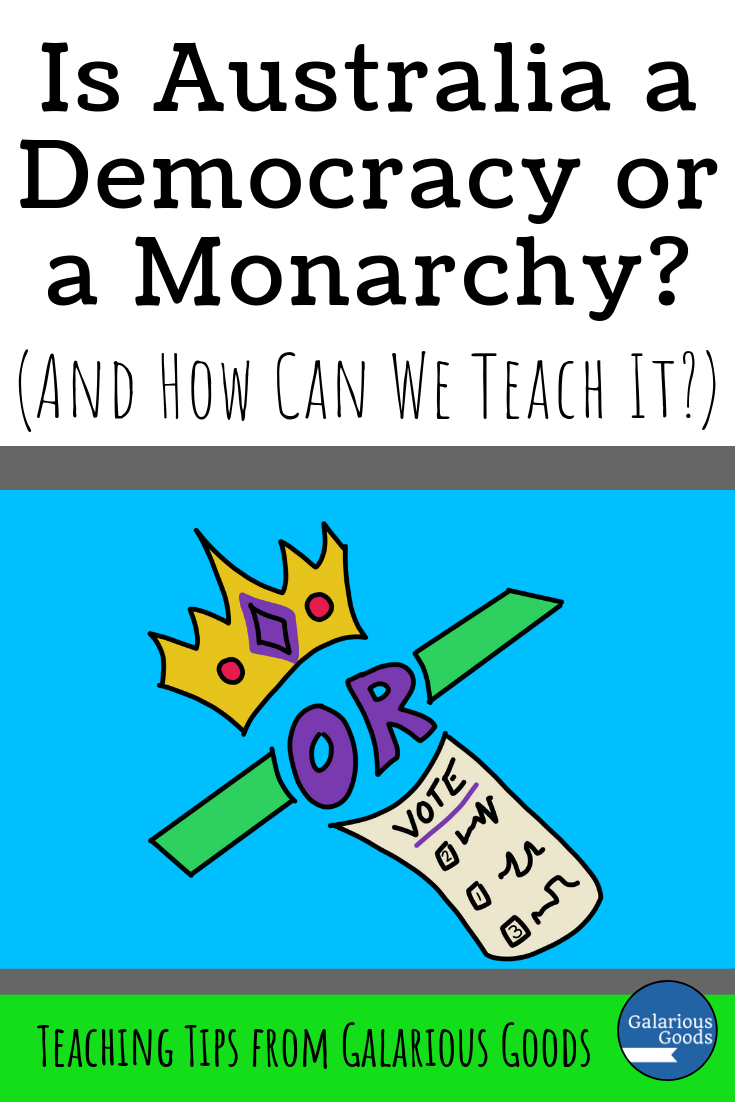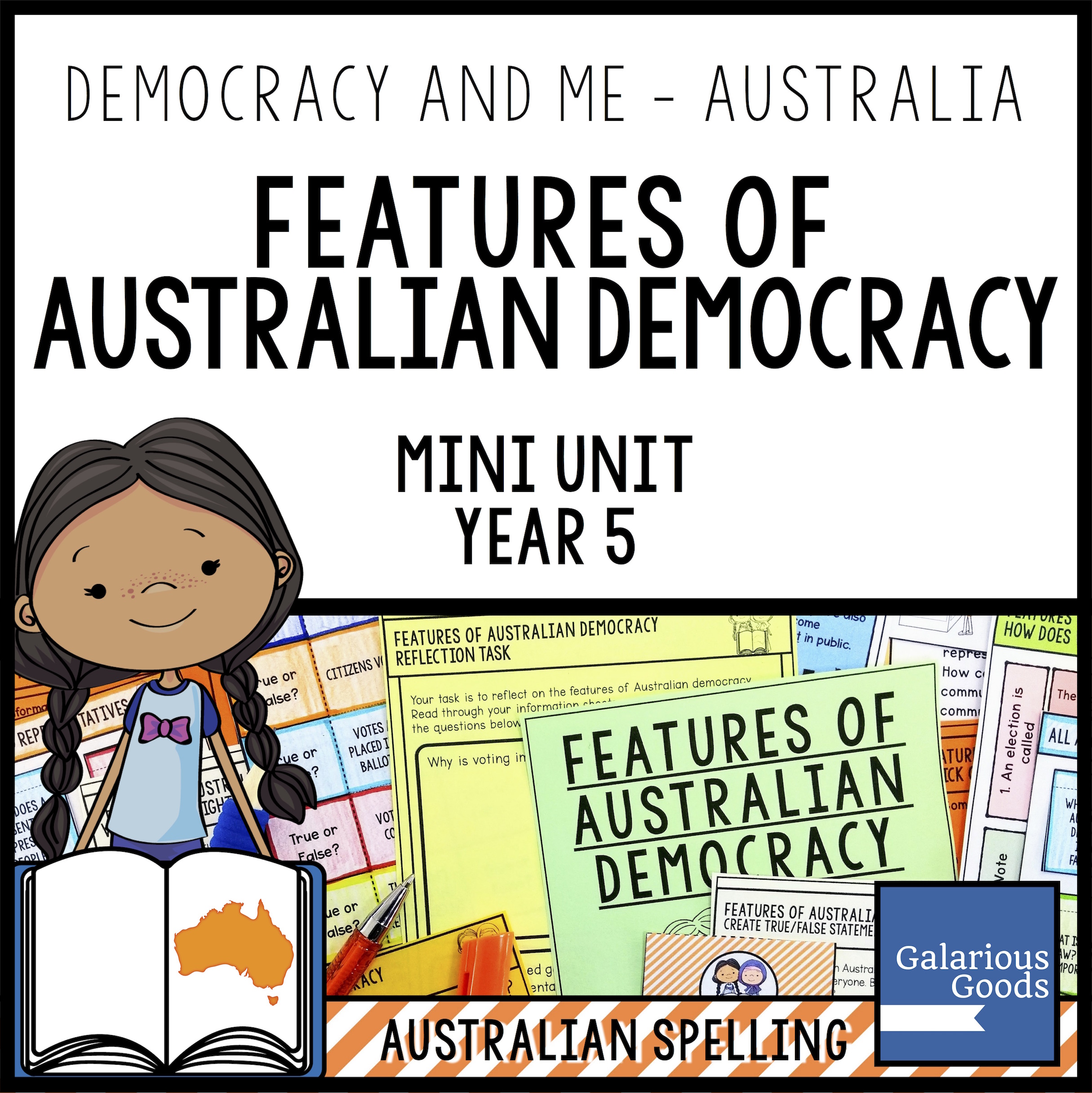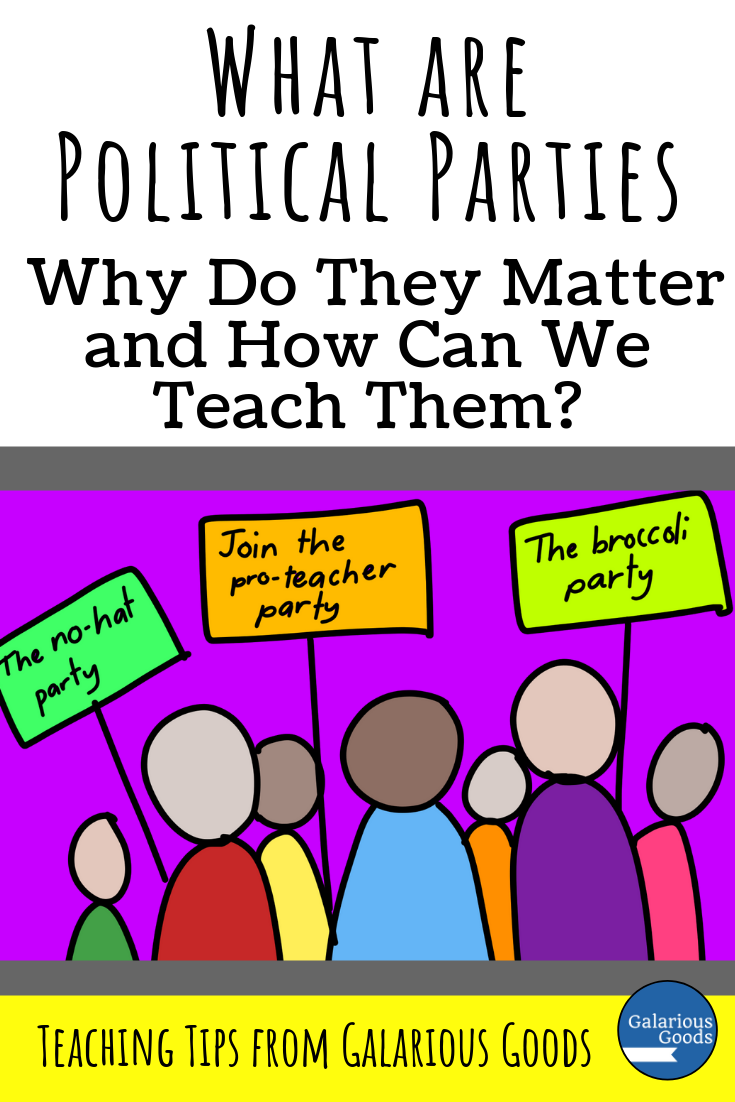Is Australia a Democracy or a Monarchy? (And How Can We Teach It?)
/Civics and Citizenship education is filled with terminology: sometimes it feels like you’re learning a new - very specific - language. So how would you use that terminology to define Australia’s type of government? And how can we teach that in the classroom?
What is Democracy?
We can blame it on the Ancient Greeks.
Well, to be honest, there were probably small communities practicing elements of democracy before the city of Athens, but the Athenians were definitely the ones who made it popular. In Ancient Athens, any male who was a citizen (and over 20) could take part in government. That meant they could be part of the group which came up with new laws, they could vote on new laws, they could speak out about new laws. The power to guide the future of Athens was in the hands of lots of ordinary people (leaving out women, slaves and people whose parents weren’t Athenian).
Democracy is still about sharing power today, although we don’t tend to see democratic systems where citizens vote on everything anymore - that’s just too many votes on topics not too many of us really care about! Instead of that direct form of democracy, most democracies are representative. In a representative government, the citizens vote for people to represent us.
We hope that those representatives will have special talents or gifts or knowledge and will make thoughtful decisions and laws which help to move the country or state or city forward. Citizens still get to have a say - through voting for people who we think will make the laws we want and through being able to speak out about laws and other things - but we don’t make all the decisions ourselves.
How can we explore democracy in the classroom?
There are lots of ways to explore democracy, but a really easy way is just by voting! Students can propose ideas - like whether blue or green is a better colour, or if Baby Shark is really a good song or not - and then vote on them. The majority wins - and there might be a consequence. Like the teacher writing in only blue pen for the rest of the day. Or Baby Shark being played at least three times before the lunch bell.
To extend understanding, though, you can bring more options into the exercise. What if there were three songs for the students to choose from? What if the teacher offered 5 colours to vote on? In a class of 25 students, a majority of 6 students might be enough to decide on which pen colour would be used. Is it fair for only 6 students out of 25 to make that decision? This opens up an avenue for further conversation about democracy and majorities.
What is Monarchy?
A monarchy is - very simply - a government with a monarch at the head.
A monarch is the leader of a group of people - often a family - who symbolise the power and identity of the country. The monarch might have different title - king or queen, sultan, emperor - and they usually rule until they either die or abdicate - step down to hand over power to another member of the group or family.
While many monarchies are hereditary - they are passed down through the family following a set of rules about who gets it next - some monarchies are elected. For example, the Pope of the Roman Catholic Church (who is the head of the Vatican City State) is elected from cardinals before holding the position for life. In Malaysia, the monarch is elected from a group of families and they hold the position for five years.
Absolute monarchy means that the monarch has all the power. However, these days many monarchs hold ceremonial roles or have limited roles in government, with most of the power for making laws and decisions the responsibility of elected governments. This is a constitutional monarchy.
How can we explore monarchy in the classroom?
Because monarchies have been popular throughout history until today, there are many opportunities for researching them in the classroom. One avenue of investigation is to look at the symbols of monarchy in different parts of the world and different times of history. Students can look at what symbols there were for the pharaohs of Ancient Egypt and compare them with the symbols for modern monarchies - such as the British Royal family.
Is Australia a Democracy or a Monarchy?
Australia is both!
In Australia, citizens over the age of 18 participate in representative democracy. We vote for representatives to represent us at the local, state and federal level and trust that they’ll make the laws and decisions which guide the country forward.
However, we’re also a constitutional monarchy. We have a head of state who has restricted (and rarely used) powers.
Who is the head of state? Well, the Queen of Great Britain . . .
Between the 16th Century and the early 20th Century, Great Britain collected countries and states around the world to make the British Empire. Those countries were all ruled by the British monarch - the head of the British Royal family. In the modern era, as the British Empire faded, many of these countries became members of the Commonwealth realm and chose to keep the Monarch of Great Britain as their head of state. Australia is one of those countries.
As Head of State of Australia, the Queen does very little. She has representatives in Australia - the Governor General and the Governors of the states, who swear in leaders and sign laws - but again those representatives do very little (and it causes a bit of an outrage when they do try to test their power). But for many people, the Queen is important as a symbol.
Of course, not everyone feels this way. During the 1990s, more and more people called for a referendum (our way of having a direct vote in Australia) to stop being a monarchy. The referendum was held in 1999 and was unsuccessful - keeping Australia as a monarchy. Many believe this will change after Queen Elizabeth the Second passes away.
How Can We Teach It?
Some people might ask if it matters that Australia is a democracy and a monarchy. This is actually an excellent question to pose to your students - does it matter what type of government we have? What if we changed one kind of government or the other?
Students might also like to explore how we got here. How were decisions made in the different Indigenous Nations before the First Fleet arrived? What did early government look like in the colony of New South Wales? How did government change with Federation in 1901? A timeline activity could be a great way for students to examine how governments change and how they come to look like they are today.
Students can also make predictions about what government might look like in the future. Do they think we will have a monarch from another country as the head of state of Australia in the future? Will we continue to have a representative democracy or will we make changes to that system? How might the types of government change?
Monarchy and democracy might not seem like fascinating topics on the surface. But they are the systems which have shaped our government - and have shaped governments and history in the past. By getting a better understanding of these systems, we can help our students see how they can shape the country going into the future!























